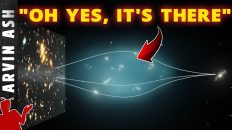If you asked my personal opinion, I think that alien life is probably pretty common in the universe. It’s entirely plausible that it exists within our own solar system, perhaps on Europa, one of the moons of Jupiter which is thought to have a vast ocean underneath its icy surface.
But by alien life, I mean life like bacteria, molds and other one-celled creatures. I think complex intelligent life like mammals, birds or lizards is probably very rare, and super intelligent space-faring life forms like humans is probably exceptionally rare. But this is not to say they don’t exist.
But whenever you read about alien visitations or see alien creatures in the movies, they are depicted as looking almost humans. They may just have bigger eyes or bigger heads, or they look like some other animal that we are familiar with on earth.
This is a reason to be highly suspect of any alien visitations, because aliens highly unlikely or near impossible to look anything like us. Why? Because aliens on another planet would evolve in a completely different trajectory, under a completely different set of environmental conditions, and circumstances, and are not at all likely to look anything like us, despite what you see in the movies.
So if aliens really did visit us, what would they really look like from a science perspective? They may look so different that we may not even recognize them as living things.
To understand what life on other planets may be like, first let’s look at the raw ingredients that life has to work in the rest of the universe, compared to our solar system.
The most common elements in the universe are:
Hydrogen=40,000, helium=3100, oxygen=22, Neon=8.6, nitrogen=6.6, carbon=3.5, silicon=1, magnesium=.91, iron=0.6, sulfur=0.38
In the solar system:
Hydrogen, helium, oxygen, carbon, Nitrogen, Neon, magnesium, silicon
As you can see from this chart, our solar system is essentially made of the same elements that the rest of the universe if made of. So in that sense, there is nothing special about the elements available in our local group of planets and our sun.
And the most common elements on earth are:
Iron=32%, Oxygen=30%, silicon=16%, Mg=15%, carbon=0.1%
So earth is composed more of the heavier elements than the rest of the solar system. Why would this be the case? Earth has relatively modest gravity compared to the sun and some of the heavier planets like Jupiter. It is not able to hold on to much hydrogen, helium and other lighter elements, which tend to float away from its gravity.
It should not be surprising that the lightest elements such as hydrogen and helium would be more concentrated in the sun and the more massive planets like Jupiter and Saturn.
But the key element to life is Carbon. Carbon is the backbone of every known biological molecule. Carbon can form 4 bonds with other atoms simultaneously. This makes it well suited for long chains of molecules that serve life, such as DNA.
Organic chemistry or the chemistry of life on earth is based largely on carbon. Is this unusual? Is this what we would expect to see on other planets of the universe as well?
You might look at the composition of earth and say, well there is 150 times more silicon available on earth, and in the periodic table silicon is in the same family of elements as carbon. So why can’t alien life be based on silicon?
This seems plausible but when you look more closely at the properties of silicon you realize why life chose carbon instead of silicon, even though it is much more abundant.
Carbon bonds are all about the same strength and stability. With Silicon the first bond is stronger than the rest so this causes instability of certain chemical reactions with silicon. In other words, carbon is capable of forming large complex chains of molecules like DNA, silicon is not, it is unstable – so the complexity required for organic chemistry with silicon is not there.
Carbon is also such that its bond with other atoms, such as nitrogen, hydrogen, oxygen is about the same strength. is relatively easy for carbon to react with a variety of other elements, in other words it is a more active atom for chemistry. Silicon is just not as reactive with other elements, and not as stable in large molecules. And given that life chose carbon when silicon was much more available tell us, that advanced alien life based on silicon instead of carbon is unlikely. It appears that for complex chemistry required for things like DNA and other molecules which are crucial for our advanced biology, carbon is a key element.
Besides carbon, what does all life on earth have in common? All life uses Liquid water as a solvent, and Adenosine Triphosphate (ATP) to store and release energy.
It is likely that if life on other planets is based on carbon, it will also need some type of energy molecule – either ATP or something similar, but does it necessarily need water?
Water is the most abundant compound in the universe. This should not be a surprise because it is made up of hydrogen and oxygen – the 1nd and 3rd most abundant elements. Water is a solvent and medium in which complex chemistry can take place, and exchange of nutrients. It is a good solvent because it is liquid over a large temperature range. Everywhere there is water on earth, life is also there. So life based on water could be quite common.
So far, it would not be a bad bet to presume that intelligent alien creatures on other planets could be based on carbon chemistry, and water. This is not to say that chemistry could not exist in other solvents such as liquid ammonia or methane, which is prevalent for example on Titan, one of Saturn’s moon. But from what is known about earthly chemistry, it likely would not harbor complex intelligent life.
Would they be in the same environment as earth? Probably not identical, but temperature wise, earth is unique in the solar system because it is the only planet or moon where water can be found in three different phases, solid, liquid and gas at the same time. So for example, if you are sailing on a ship on a foggy day and see an iceberg, you are viewing water in all three phases at the same time.
There is a critical zone or distance from a star where a planet is not so hot such as mercury, where it gets so hot that water boils away, but also not too far like Jupiter where it is so cold that water freezes. Earth happens to be at this ideal, so called Goldilocks zone where it is not too hot, and not too cold for water to remain liquid. This is crucial for life because liquid water provides the medium or solvent in which complex organic chemistry can take place. This can’t happen in ice, and it so happens that the boiling point of water, 100 degrees celcius is close to the upper limit of organic chemistry, so if it our planet was too hot, organic chemistry would not work.
But our alien planet could certainly have a different ratio of water to land, and it could have different gravity. According to the latest Keppler data there appear to be many more planets bigger than earth than there are the same size as earth. So there is larger prevalence of so called, “super earths” in our galaxy. These are planets that are 1.25x-2x size of earth, and would have gravity 2x to 8x times that of earth.
But it is not known whether they are rocky planets like earth and mars, or gas giants like Neptune and Uranus. So for now let’s presume that we would need a planet similar to earth in size perhaps, 0.9x-1.1x the size of earth. Given the size of the galaxy with 200 billion stars, such a narrow range of planets would still be plentiful – in the millions.
So let’s look at what intelligent life that evolves on an earth size planet in the habitable zone of sun-like star, based on carbon chemistry and water would be like.
There is one thing that is nearly certain: an alien life form will be symmetrical. Everything we know of that grows follows a symmetrical pattern. This goes for trees, humans, and all living things. It even applies to nonliving things like planets and galaxies.
For intelligence, a large brain capacity would be needed. So this means that the life form would need some sort of protective mechanism for the brain—an exoskeleton, a skull, something like that.
Intelligent life would need to be able to build tools. This would require limbs or digits of some sort to hold and manipulate objects, and probably fine motor movements. These need not be fingers, but anything that can hold objects – perhaps prehensile tenticles with finer digits on the ends.
They would require some way of recognizing their environment – sensory mechanisms – the analogs of eyes, ears, noses.
—-
Eyes seem to have evolved a few times separately on earth. So for example, the eyes of Octopuses, scallops, mammals and insects are thought to evolved separately, but serve the same essential function. So something like eyes may be a universal trait, and common on aliens as well.
But their “eyes” would have evolved for the peak electromagnetic spectrum of their own sun, not necessarily ours. For example, their eyes may have evolved to sense infrared or heat. This could give them an advantage in detecting living things at night, because most living things produce heat as a by product of their metabolism. They could have infrared sensing pits, like pit vipers do on earth. And they would need at least two of these to sense direction and depth.
They would need a way to eat or consume energy, and they would need to excrete waste. So they likely have two orifices for this. On earth, all large animals have some means to capture and swallow food.
For intelligence, it appears crucial for a species to cooperate and communicate in some kind of language. So they’d need to do this somehow, not necessarily by sound, like us with our mouths and ears. They could use other methods, such as through smells – Pheromones, or movement like sign language, the way bees do it – or even touch. It could be through light – such as blinking phosphorescent patches. The aliens would probably use the most efficient means to communicate that would give them the best advantage for survival.
Do they live in a sea? In the clouds of a gas giant? Or on land?
Using our one data point of earth, there is no complex life that lives permanently in the atmosphere. And most intelligent species on earth happen to be on land, instead of the sea. You might say, what about dolphins and killer whales. You have to remember that these animals were once land mammals. They went back to live in the sea. That’s why they still need to breathe air. Octopuses are perhaps an exception. They appear to be quite intelligent and live in the sea.
Does living on land provide some kind of evolutionary bias towards higher intelligence?
According to physics professor Bernard Bates at the University of Puget Sound, Aliens with advanced technology would have to be on land because technology needs fire to kick-start it. By providing a survival advantage, and a way to create advanced hunting tools. This can’t happen in the water.
Light from the Sun also does not penetrate as deeply in oceans. There is very little light beyond 200 meters in the ocean. So the energy that ocean creatures have to work with is less than the energy available on land. This makes it harder for larger complex creatures to evolve.
The other thing about land is that a predator’s smell and sight arrives long before the predator does. So, prey is harder to catch. This could be a reason that predatory animals on land tend to be more intelligent than animals in the ocean. They have to be in order to eat. And humans are predatory animals. Similarly, we should expect intelligent aliens to have evolved from predator ancestors as well.
So if aliens live on land, they would also need some means of locomotion – mammal legs and insect legs evolved separately, but serve largely the same function. So our aliens would likely have legs of some sort. They could slither like a snake or hop like a kangaroo as well. It all depends on whatever locomotive method gave them a predatory advantage. Predators on earth mostly appear to have legs for fast running. So the legs would likely be segmented like ours for more efficient running. Whether it is two or 4 or more is hard to say.
Two, like ours, is more efficient, but it is not that stable because one push and humans can fall over. 4 is more stable, and may provide faster speeds, but requires more energy to maintain. More than 4 is probably too inefficient. On earth no land animals with endoskeletons or internal bones, have more than 4 legs.
There are probably only so many ways an alien can efficiently see, eat, walk, and communicate. And natural selection on their planet would probably weed out inefficient body plans.
How prevalent is intelligent life likely to be in the universe? Dr Yael Kisel, scientist at NASA’s Ames Research Center and other scientists believe that most life in the Universe as a whole is likely to be microbial, especially given that they were Earth’s earliest life forms. At 10^30 bacteria on earth, they dominate the biomass of earth even today.
What does a typical alien look like? It’s going to be a little blob like a bacterium under a microscope according to Dr Kisel.
But does simple life like bacteria naturally evolve into more complex intelligent life? Well, It is not clear whether intelligence is an evolutionary imperative. It is possible that the energy required to maintain a large brain is not evolutionarily advantageous vs. having larger teeth or higher speed.
But to the degree that intelligence allows a species to survive better during times of hardship, it may be advantageous. If you make the argument that natural selection favors intelligence, then perhaps any planet with even the simplest life progresses towards an intelligent species.
But there could be a balance such that beyond a certain intelligence, there is no survival advantage. So for example the intelligence of wolves may be as intelligent as life needs to be in order to survive hardships. Our superintelligence which is way beyond any other living thing on earth, and which has to be supported by a huge amount of energy consumption, not only by our brains but also our technology, may be an aberration and not evolutionarily advantageous.
So we may be an exception in evolution, or the result of a series of coincidental mutations in our ape genome. But if earth is typical, super intelligence takes a long time to evolve, Life on earth has been around for at least 3.8 billion years. But Human have only been around for maybe 200,000 years. In cosmological terms, we are a newborn baby seconds old.
But given the vast number of planets in the universe, it seems that even if our intelligence is an accident, takes a long time, requires circumstances like being just the right size planet, located at just the correct distance from its star, having a large moon to balance our seasons, and being in a stable part of the galaxy, where we didn’t get wiped out by a meteor or gamma burst, we should still have company – intelligent neighbors somewhere. They are likely however to be so far away, that we may never actually encounter them.
Seth Shostak, astronomer at the SETI institute believes that our first encounter with aliens will likely not be with carbon-based life, but silicon-based life. He says that because he believes we our close encounter will not be with biological creatures, but with their highly intelligent machines or probes using silicon chips for processors, that they would have sent out to the far reaches of the galaxy.
Machine evolution could be much faster – thousands of generations in minutes or seconds depending on processing power. “The majority of the really smart stuff in the Universe is going to be machinery.” Shostak says.
This makes sense if you consider that this is also the likely evolution of us here on earth. We are much more likely to send probes to our nearest neighbor Proxima Centauri, 4.5 light years away for example, than humans.
So the next time you see little green men in movies, realize that this is probably fantasy. Life forms that we encounter would be completely different than us. They might be little. They might be green. But they will almost certainly not be men.
Water is the most abundant compound in the universe. This should not be a surprise because it is made up of hydrogen and oxygen – the 1nd and 3rd most abundant elements. Water is a solvent and medium in which complex chemistry can take place, and exchange of nutrients. It is a good solvent because it is liquid over a large temperature range. Everywhere there is water on earth, life is also there. So life based on water could be quite common.







